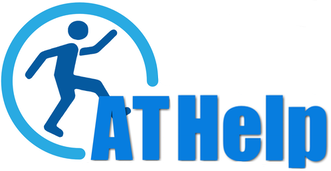Assistive Technology for Students
The Dilemma: Time
Even after four decades of use and countless research studies extolling its impact on creating accessible learning opportunities, Assistive Technology (AT) is still relegated to a reactive post-remediation plan for many of our students and is not seen as a proactive and integral path for fostering growth alongside other educational interventions. For example, if Text-to-Speech provides greater multi-sensory exposure to vocabulary and improves comprehension (Stodden, et al, 2012) then why isn’t such AT provided to students alongside typical remediation practices? We all know the complaints: “AT is a crutch”, “children will choose AT over natural skill development”, and other unsubstantiated claims. But that's not the real problem. The problem is us waiting until a child is struggling, is losing interest in learning, has been removed from participating with their peers one too many times, and is now doubting whether or not learning is within reach. Add to that the learning curve for mastering and integrating IEP recommended AT into a student’s classroom experience and you’ll discover the greatest challenge facing all children with disabilities–-time.
The Greatest Obstacle: Consideration
The need exists. The money for assistive technology exists. The skills to integrate it exist. The challenge is how it begins. The consideration of assistive technology by an educational team for a student is the most difficult factor to enable. The biased perspectives of educational professionals (and often caregivers), as well as a lack of awareness on the value of such tools for sustaining engagement and creating access are often what prevents AT from being considered. Ultimately an educator’s personal beliefs that a struggling learner has ‘reached their potential’ or that another child who is nonspeaking and physically challenged by the environment cannot ‘overcome’ obstacles we ourselves have created, will prevent that educator from pursuing alternative approaches like AT. Therefore we have to radically alter educational perceptions (in both academia and in the classroom) as to who really can be a learner thanks to these technological supports.
The Solution: Assistive Technology Literacy for All Students (ATLAS)
We can’t predict who will have a learning challenge, or whether professionals will be prepared with AT solutions when needed–-so the only solution is to teach AT skills to ALL students and create a culture of multiple literacies in learning tools. We need a more proactive and holistic interventions that encourage early exploration of AT in order to support “access and sustained engagement” (Edyburn, 2010) with rigorous academic content and skill development for all students, creating a more equitable classroom experience for all. All students should be taught basic assistive technologies alongside 20th century learning tools before any learning struggles are observed. If children were to learn these tools before they needed them, then they would immediately recognize that there are alternative paths to learning and would be less intimidated by any obstacles to participation that they encounter. The profound impact that this would have upon their educational experience never mind their mental health is immeasurable. Children learn how to use a pencil before they need it for writing; and so children should also learn how to use text-to-speech before they may need it for listening to educational content. It's that simple. These are the 21st-century tools and they need to be mastered before they are needed. That's how we solve the assistive technology dilemma.
